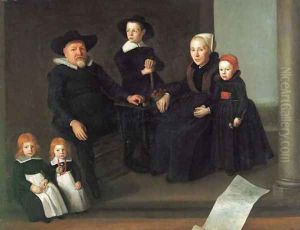Gerbrand Ban Paintings
Gerbrand van den Eeckhout, also known as Gerbrand Ban, was a Dutch Golden Age painter and a pupil of Rembrandt. Born in Amsterdam in 1621, Eeckhout was the son of a jeweler. He showed an early talent for art and was apprenticed to Rembrandt at the young age of fourteen. Under Rembrandt's tutelage, Eeckhout acquired a firm grounding in his mentor's dramatic style and a mastery of chiaroscuro.
Eeckhout's early works are strongly influenced by Rembrandt, and he often painted biblical scenes, history paintings, and portraits with a similar use of lighting and a comparable emotional depth. However, as his career progressed, he developed a more individual style, though he never completely abandoned the influence of his teacher.
After completing his apprenticeship, Eeckhout began to take on students of his own. He also became a member of the Amsterdam Guild of St. Luke, a professional association for painters. His works were well-regarded, and he enjoyed the patronage of several important figures of his time. Eeckhout was also known for his genre scenes, which often depicted everyday life in a manner that was less grandiose than that of Rembrandt but still imbued with a sense of narrative and moral significance.
Eeckhout's later works show an increased interest in landscape and architectural elements, and he also produced etchings that are valued for their quality and detail. Despite his success as an artist, there is not much information about his personal life. The exact date of his death is uncertain, but it is believed that he died in Amsterdam around 1669.
Gerbrand van den Eeckhout remains a notable figure in Dutch art history, recognized for his contributions to the development of genre painting and his role in perpetuating Rembrandt's artistic legacy. His works are held in numerous public and private collections around the world, attesting to his enduring appeal and the significance of his art.
